Rural Utopias in Badgerland
J. Shimon & J. Lindemann find mystery and nostalgia in scenes of Wisconsin.
J. Shimon & J. Lindemann find mystery and nostalgia in scenes of Wisconsin.
The exhibition, J. Shimon & J. Lindemann: We Go From Where We Know, could be reviewed in the form of a poem. It is evocative, mysterious, elegiac, and infused with a curious quotidian beauty. It would be interesting to wander into the exhibition with any written reference to Wisconsin momentarily removed. Given the drawings, the altered postcards, the photographs and concrete sculptures, would you realize that all these things are inherently linked to the state?
I think you would. There is a sense of acute observation and irony that permeates the images of the two collaborative artists, a feeling that is often linked to a definite place. One example is the delightful suite of works, Rural Utopias. Dozens of small drawings line the gallery wall, reveling in a creative, zany, poetic life among fields and nature. Pithy statements narrate the activities of the drawn figures, who frolic and work in the nude. There are exceptions, however. One drawing asks the probing question, “can it be rockabilly without clothes?” as a band of female musicians play upright bass, drums and guitar in a field. The women sport Betty-Page style hair, and the guitarist’s red heels, fishnet stockings, and flower in her hair project the rockabilly style in shorthand.
A recurring figure in Rural Utopias is a nude figure identified as Truth, who hovers and appears in tourist destinations and public places, an illustrated figure inserted into postcard views. This adds a note of gravitas: where and when does Truth appear? What does Truth mean?
There is a palpable authenticity throughout Shimon & Lindemann’s work. Life-size inkjet prints of individuals, identified in wall text only by name and where they are from, are monumental gestures to the uniqueness of each person and an ode to everyday life. The fact that the city where each individual lives is included underscores a relationship between identity and place. We all carry our identity with us; it’s highly portable, to say the least. But the place where we’re from or we call home is external, a physical space that embraces us within a community.
Some of the most mesmerizing works come from their series of photographs capturing views of rural life, small towns, and Lake Michigan. The photographs include captions with the place and date they were taken. This links each image to a definite moment, a visual diary of how in that place and that time, a shaft of light and long shadows played on a house in October, or the streets lay so empty and still during a December afternoon in a small northern town. You can flip through the calendar of your own life, and thinking about where you were at that point, vicariously experience a different moment and how it was in a place you never were.
A potent sense of nostalgia permeates this exhibition. One of the keenest allusions to this is the display of vintage postcards from around the state which are complemented by exhibition visitors’ reflections on their favorite, most vivid, or strangest Wisconsin memories. I’m sure we all have a few of those. Effectively, these postcard views, which often play to picturesque and conventional notions, are expanded by these comments, suggesting a varied and more unexpected reality being lived among the places pictured.
In the middle of the gallery sits a car, a 1949 Nash Ambassador made in Wisconsin. It is filled with concrete corncobs, recalling the artists’ memories of a neighbor who used an old decaying car for a corncrib. That vehicle looks pretty immobile but provides a useful metaphor. We Go From Where We Know is like a car ride, a passage of fleeting moments as views flicker by with one discovery after the next. The moments pass but are collected in memory, preserved and shared in postcards and photographs of places and time. We go from where we know.
J. Shimon & J. Lindemann: We Go From Where We Know is on view at the John Michael Kohler Art Center in Sheboygan (608 New York Avenue). The exhibition has been held over through March 2.
THIS WEEKEND
SATURDAY, MARCH 1
Mad Hatter Tea
1801 N. Prospect Avenue
March 1 and 2
3pm-5pm
$27 / $20 Museum Members / $10 Children 12 and under
Down the rabbit hole we go as the Charles Allis Art Museum is transformed into the Mad Hatter’s Tea Party. A family-friendly event, guests are invited to don festive headwear and enjoy Rishi tea and other treats while enjoying live music by Jeff Krumbein and guided museum tours. Alice and other characters from Wonderland will also be in attendance.
Sonja Thomsen: Glowing Wavelengths In Between
759 N. Water Street
Exhibition closes March 1
It’s the last day to check out Sonja Thomsen’s exhibition of photography and installations infused with illumination.
Robin Luther: Population
The Marshall Building
207 E. Buffalo Street, Suite 222
Exhibition closes March 1
Robin Luther’s photography explores concepts of citizenship and displacement. She says, “The title of the exhibition, “Population:”, refers to the fact that the inmates of Menard Correctional Center are counted as residents of the general population of Chester, Illinois. I am particularly interested in the fact that most of the inmates have never seen or experienced this town which they are calculated as residents of, and the disconnect between their past and present, and between them and their family once they’re moved to these far away, rural prisons.”
SUNDAY, MARCH 2
Gavin Brown
1500 N. Farwell Avenue
Exhibition closes March 2
Gavin Brown’s encompassing video installation and drawings complete their run at this east side gallery. For more on this exhibition, see the TCD review Visual Art: Truth and Fiction.
Currents 36: Dirk Skreber
700 N. Art Museum Drive
Exhibition closes March 2.
Sublime destruction influences the images and sculptures of catastrophe by German artist Dirk Skreber, known for his elaborate installations that stop time in the midst of chaos.
Art
-
Exhibit Tells Story of Vietnam War Resistors in the Military
 Mar 29th, 2024 by Bill Christofferson
Mar 29th, 2024 by Bill Christofferson
-
See Art Museum’s New Exhibit, ‘Portrait of the Collector’
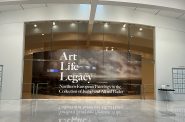 Sep 28th, 2023 by Sophie Bolich
Sep 28th, 2023 by Sophie Bolich
-
100 Years Of Memorable Photography
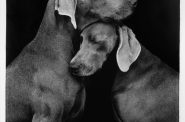 Sep 18th, 2023 by Rose Balistreri
Sep 18th, 2023 by Rose Balistreri
Art Date
-
Apocalypse Now
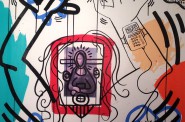 May 30th, 2014 by Kat Murrell
May 30th, 2014 by Kat Murrell
-
Slower Than a New York Minute
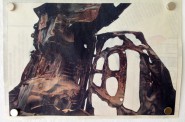 May 16th, 2014 by Kat Murrell
May 16th, 2014 by Kat Murrell
-
Easy Rider
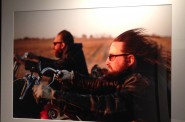 May 9th, 2014 by Kat Murrell
May 9th, 2014 by Kat Murrell




















